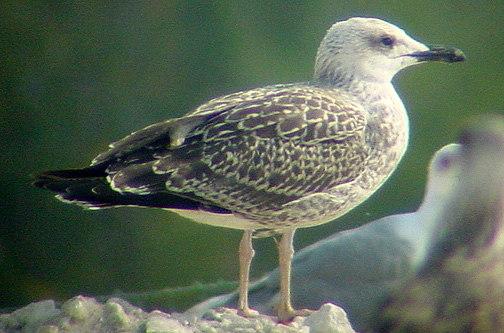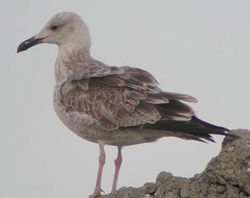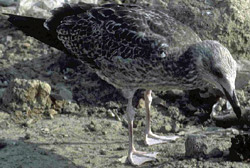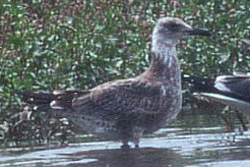 Yellow-legged
Gull- Geelpootmeeuw (L. michahellis): 1cy July
Yellow-legged
Gull- Geelpootmeeuw (L. michahellis): 1cy July
(last update: 08 december 2003)
.
YLG
1cy July YLG
2cy January YLG
3cy January YLG
sub-ad Jan. YLG
adult January
YLG 1cy August
YLG 1cy September
YLG 1cy October
YLG 1cy November
YLG 1cy December
YLG 2cy February
YLG 2cy March
YLG 2cy April
YLG 2cy May
YLG 2cy June
YLG 2cy July
YLG 2cy August
YLG 2cy September
YLG 2cy October
YLG 2cy November
YLG 2cy December
YLG 3cy February
YLG 3cy March
YLG 3cy April
YLG 3cy May
YLG 3cy June
YLG 3cy July
YLG 3cy August
YLG 3cy September
YLG 3cy October
YLG 3cy November
YLG 3cy December
YLG sub-ad Feb.
YLG sub-ad March
YLG sub-ad April
YLG sub-ad May
YLG sub-ad June
YLG sub-ad July
YLG sub-ad Aug.
YLG sub-ad Sept.
YLG sub-ad Oct.
YLG sub-ad Nov.
YLG sub-ad Dec.
YLG adult February
YLG adult March
YLG adult April
YLG adult May
YLG adult June
YLG adult July
YLG adult August
YLG adult September
YLG adult October
YLG adult November
YLG adult December
(1 image + links) Photo 5700: cachinnans (?) juvenile, July 29 2001, Dannes - Le Portel (France).
Not a very good picture, but note the slender bill, dark tertials, notched juvenile coverts and scapulars, the dark greater covert bar, the large white tips to the median coverts and the broad tail-band (which is hardly visible). These features may point to the taxon cachinnans.
However, we received some comments and questions if some features wouldn't better fit michahellis:
- Post-stamp notching on the lower scapulars and greater coverts. Juvenile cachinnans normally has very simple white fringe along the dark centres,
- Warm tones on the centres of the upper-part feathers,
- Post-stamp notching on the tertials,
- No broad white tip on the tertials,
- Relatively short legs.

We have limited experience with cachinnans in complete juvenile plumage and must rely on images in magazines and on the web. Birds arriving in the Netherlands, seen from August onwards, often have started the post-juvenile moult and have replaced many of the scapulars. Regarding the bird in the image above, we don't think michahellis can be fully excluded, but some points may strongly favour cachinnans:
- First, on jizz alone, it's hard to exclude either cachinnans or michahellis. Length of the legs in both taxa overlap substantially, including the standard deviation value. Much depends on the "mood" of the individual gull, temperature, etc. In many pictures, cachinnans seem to have thinner legs and that may give the impression the legs are longer, as often mentioned.
- The colour of the centres in the upper-parts is rather cold brown, with contrasting pure white fringes. When you compare this individual with juvenile michahellis from the same date, those michahellis have the upper-parts already slightly bleached, pale brown, with the fringes more buffish-white by the end of July. The individual in the picture was clearly fresher than surrounding birds, lacking obvious wear in the fringes of upper tertials, inner wing-coverts and rear scapulars. The brown colour of the centres is highly related to the age of juvenile birds and it's difficult to use this feature for identification (See the note of Ronald Klein on the bottom of this page). An example of a dark-coloured bird is printed in the article about Polish cachinnans, Birding World 13-11.
- Notching on the inner greater coverts, including a diffuse transition between the dark centre and the white notches, is possible for cachinnans. In the table below, an image of juvenile cachinnans with notched inner greater coverts is added, a bird photographed by Dick Newell.
- The median coverts show nice broad white tips, creating a white bar on the folded wing.
- The inner and central greater coverts show broad dark bases, gradually becoming pale at the tips, creating a second wing-bar on the folded wing. This pattern is very reminiscent of the bird in plate 2 in the Birding World article. Michahellis often shows a less irregular pattern on these wing-coverts.
- The tail-band on the bird is more in line with cachinnans than with michahellis. As can be seen in the image, the outer tail-feather R6 still shows an obvious continuation of the band on the outer-web, with sparse barring on the basal half of the outer-web. In juvenile michahellis, the tail-band is normally triangular, wedge-shaped with the tail-band hardly continuing on the outer-web of R6. Isolated black markings are not common the the basal half of the outer-web of R6.
- Unfortunately, the under-wing pattern was not seen.
- As was commented earlier, the pattern on the tertials is not exactly what you hope for in cachinnans. The clear white tip is lacking and the transition between dark centre and white tip is well-defined. Some authors stress the importance of a gradual, rather diffuse transition between centre and top on the tertials. Such a tertial pattern is nicely shown by the individual photographed by Dick Newell, but in the image of Ronald Klein, the division between tip and centre seems to be well-defined. Maybe there is some variation in this feature?
- The notched pattern on the lower scapulars really is problematic, as all images available show neat straight white fringes on these scapulars.
It's still hard to tell exactly what taxon this individual belongs to. Some features favour cachinnans, some favour michahellis. Maybe we find a more convincing answer in future, when the extend of variation on each feature is known for the various taxa. Thanks to Ronald Klein (Germany), Peter Adriaens (Belgium) and Rik Winters (the Netherlands).
There are a few links to juvenile cachinnans on the web (click the image to find the URL):
 |
Dick Newell's website: A juvenile cachinnans, photographed on 23rd August 2002, Milton, Cambs. UK. Dick writes: Amongst only 150 Lesser Black-backed Gulls and 1 adult michahellis, this unseasonal bird was a nice find. It was a large bird, so almost certainly a male. It's under-wings were extremely white. Apart from its head and some of the under-parts, all of its feathers seem to be juvenile. Both the tertials and greater coverts have a more complex pattern than normal. It has already dropped many of its median coverts and scapulars. So this bird is a juvenile starting its moult into first winter. (some helpful comments from Richard Millington helped to get the detail of this right). |
 |
Martin Reid's website: This juvenile cachinnans was photographed by Ronald Klein in Baltic Germany, July 1996. Ronald comments: " In early summer they look as dark as other juvenile large gulls. They can be identified on structure and their typical behaviour (aggressive on rubbish with an "albatross-posture" and characteristic voice)." |
 |
Rudy Offereins' website: Juvenile cachinnans, photographed by Theo Bakker on July 17th 1999 at the VAM rubbish dump in the north-eastern part of the Netherlands. Rudy writes: It has a large size (compared to the Lesser Black-Backed Gull Larus graellsii). Note the pale head, sloping forehead with its firm parallel bill and its elongated appearance and upright stance. The outermost greater coverts are virtually unmarked and the under-tail coverts are spotted, not barred (both unlike e.g. Y.L. Gull). The tertials are dark brown with a rather broad, pale edge. Not all juvenile cachinnans show a pale head like this one, but the ones I have seen so far did show the unmarked dusty-brown mantle, running up into the neck, which to me, along with its jizz, seems one of the key elements to pick out a juvenile cachinnans. Note the almost unmarked brown belly with the large darker spot near its legs, the white under-tail coverts with just a few dark spots (not barred as in Herring and Yellow-legged Gull) and the pale edge on the median and greater coverts, thus creating a double wing-bar effect. |